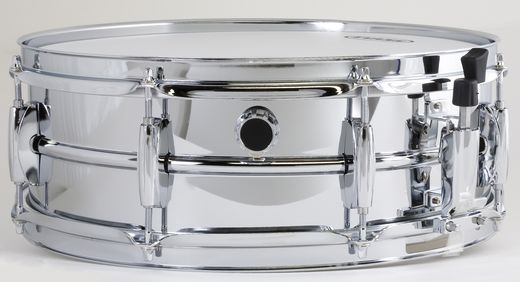Ludwig Rocker Steel Shell Snare Drum
Ludwig Rocker Steel Shell Snare Drum

Ludwig Drums There’s a reason the world’s best drummers are playing Ludwig drums. Because for 90 years, Ludwig has designed and crafted their drum kits and components with both eyes on quality, and both ears on sound. The Ludwig sound is inimitable. The look? To say they look good is simply an understatement. But that beauty is more than skin deep. Ludwig knows that along with your music comes a long series of setups, performances, tear downs and moves. So they build their kits to keep looking and sounding good, gig after gig after gig. Ludwig kits have been carefully selected to give you that legendary Ludwig look and sound, matched to your musical tastes, your skill level and – importantly – your budget. The History of Ludwig Drums William F. Ludwig, Senior, born 1879 in Germany, emigrated to the United States with his family at the age of eight. Jobs in Chicago for his father, a professional valve trombone player, were scarce. Young Ludwig, upon seeing in parade the proud drummers of the First Regiment of the Illinois National Guard, was convinced he wanted to become one of them. However, his father insisted that the drums were not a serious musical instrument. After several unproductive years of lessons on the violin and the piano, his father relented in purchasing a second-hand drum. Progress on the drums led to dates with small amateur groups and eventual paying jobs. The seeds for the Ludwig Drum Company were planted during a 1908 vaudeville job at the Auditorium Theater in Chicago. Ludwig’s clumsy old wood pedal, accustomed to circus marches, could not meet the rigorous demands of the new syncopated jazz and ragtime rhythms. Visits to local music stores did not yield a satisfactory pedal. As a last result Ludwig built his own wooden foot pedal, capable of faster tempos without any loss of force or volume. Samples built for Ludwig by a local cabinet maker became the envy of local drummers. Robert C. Danly, Ludwig’s brother-in-law in charge of the tool room at International Harvester Company, believed that the pedal could be mass produced from more durable metal materials. William and his brother Theo formed Ludwig & Ludwig in 1910, with the unique pedal being made in a rented barn on the northwest side of Chicago. In 1909-1910 William accepted the timpani position with the Pittsburgh Symphony Orchestra. The exorbitant price of ,800 for a pair of foreign timpani prompted Ludwig to consult with Danly on a less-expensive, higher-quality design. After three years of experimentation the first set of hydraulic action timpani were sold to the St. Paul Symphony Orchestra. After two months of use the rubber expansion tube inside the kettle burst during a performance and the fluid drained into the stage footlights. After several more experiments the two settled on a spring mechanism in 1916–the basis for the current Balanced Action Pedal Timpani.
List Price:
Price: 114.95
 De Rosa DRM312-BU Children’s 3 Piece 12 Inch Drum Set with Chair, Blue
De Rosa DRM312-BU Children’s 3 Piece 12 Inch Drum Set with Chair, BlueDe Rosa Children’s Drum Set is the quintessential drum kit for any young aspiring drummer. This set comes with everything your dru…
 ION Audio Discover Drums MKII Tabletop Electronic Drums
ION Audio Discover Drums MKII Tabletop Electronic DrumsLearn to play the drums with DISCOVER DRUMS 2. This tabletop drum set has great sounds you can play on the four drum pads. You ge…

